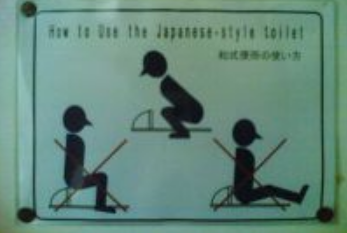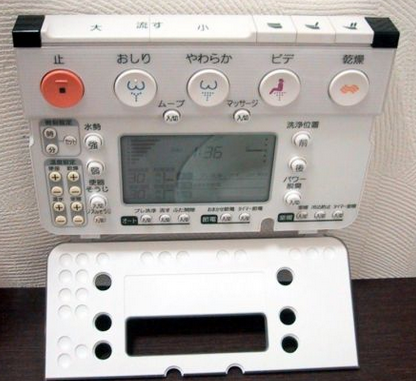(单词翻译:单击)
TOKYO — Between the futuristic "BladeRunner"-esque toilets and the slightly terrifying (but healthier for you)traditional squatters, Japanese restrooms can be a bit intimidating for afirst-time user. And even for those who have lived in Japan for a while, usinga public toilet can still be a daunting task. So to better understand restroom woes for those coming from overseas, Japanese toilet manufacturer Toto recently surveyed 600 foreigners living in Japan about toilets in the country and what confuses them most.
东京——在未来式的“银翼杀手”式的厕所和有点令人恐惧的(但对你来说更加健康的)传统蹲厕之间,日本厕所对于首次使用者来说可能有点吓人。即使对于那些在日本已经住过一段时间的人来说,使用日本的公厕仍然是令他们感到畏惧的。所以为了更好的了解外国人在使用日本公厕时所遭受的痛苦,日本厕所制造商Toto(东陶公司)最近对生活在日本的600名外国人进行了采访。

First up on Toto's toilet survey was aquestion about toilet choice. That is, if you were at a public restroom with Western-style (aka one you sit on) or traditional Japanese squat toilets, which stall would you go into? Unsurprisingly, over 80% answered that they preferred to sit rather than squat.The next question asked those surveyed to think back to when they first came to Japan and to remember the biggest problems they had when answering the call of nature in a public restroom. Mostpeople said that they had no idea how to use a Japanese squat toilet when theyfirst saw one. Even foreigners who came from countries with squat toilets werea little confused exactly how to use the Japanese ones. One of the Americanspolled said that he actually thought you were supposed to sit right on the toilet bowl.
这个调研中的第一个问题有关于厕所的选择。即在一个同时拥有西式座圈马桶和传统日本蹲式厕位的公厕里时,你会选择哪一个?不出所料,超过80%的外国人都更喜欢坐式的。第二个问题是要求这些外国人回想自己第一次来日本时在使用公厕时所遇到的最大问题。大部分人回答说他们首次看到蹲式侧位时根本不知道要如何使用蹲式厕所。即使是那些来自拥有蹲式厕所的国家的外国人也不是很清楚要怎么使用日本式的蹲式厕所。其中一位美国人说他以为是要直接坐在日式蹲厕的坐便器上。
And besides the squatters, many people recalled their utter confusion the first time they sat down on a modernJapanese "washlet" toilet (see photo below). The many buttons on the seat ornearby control panel overwhelmed many and utterly confused people used tosimpler toilets that don't need to be plugged in. And until you can read Japanese, you have to rely on the little drawings that still won't help you outmuch. The futuristic toilets of Japan may look cool, but many people were intimidated at first.
除了蹲式厕所,很多人还回忆了首次坐在日本现代式的“卫洗丽”坐便器上。坐便器或者说附近控制板上的那么多按键让很多人无所适从。除非你懂日文,否则仅靠上面的一些图示真是相当困难。这种未来式的日本厕所看起来可能很酷,但是很多人第一次使用时都被吓到了。

When asked about if they use the bidet function on the modern Japanese toilets, the number one answer was that it dida good job of cleaning up and some said they even preferred the bidet to toilet paper. And for others, they liked to use the bidet because they were alreadyused to using water via the bum gun to clean themselves in their home country.
当被问及是否使用过其中的坐浴盆功能时,人们最多的回答是这种功能确实很利于清洁,有些人说比起厕纸他们更喜欢使用这种清洁功能。而有些人回答说他们之所以喜欢使用这种功能,是因为在他们自己国家他们就已经习惯这么做了。
Perhaps the answer that should make Japan the proudest was when 93.6% of those surveyed said that Japanese publics are cleaner than those back home. And at the end of the day, even with the squatting and the confusing computer-like toilets, you can't argue with a nice,clean public restroom.
或许最让日本人感到骄傲的回答是有93.6%的人说日本公厕比自己国家的公厕都更加干净。虽然传统和现代的日本公厕让这些外国人在首次使用时有点不太适应,但是日本公厕的干净美好是无可置疑的。


